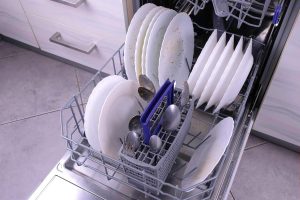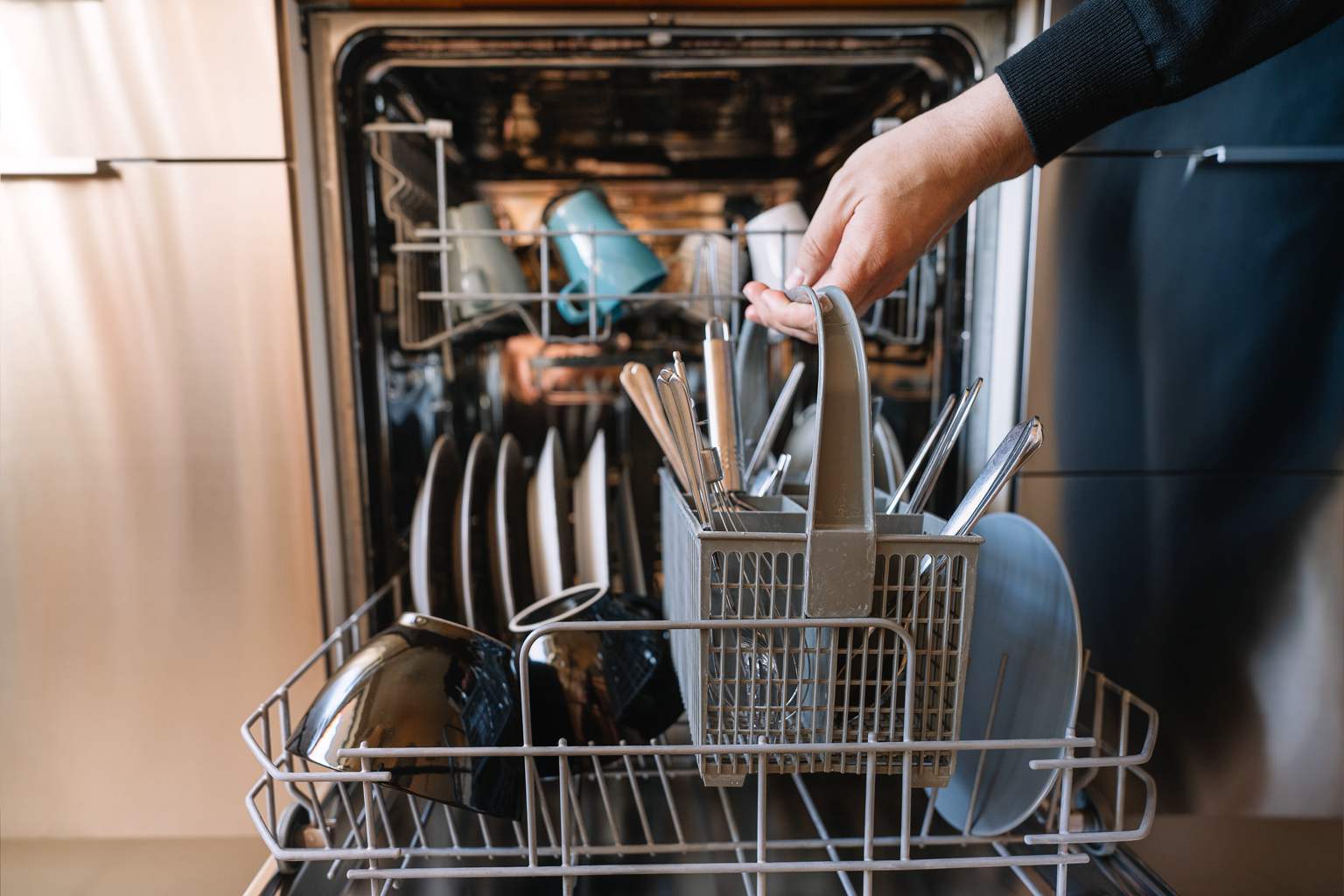Every household has a never-ending debate about how to load the dishwasher, but few topics spark quite as much passion as the battle over whether utensils should go in with the handle pointing up or down. Is there a right way to place your spoons, forks, and knives? Does it make any difference to cleanliness or safety?
This question might seem small, but trust me, it’s a hot-button topic that can divide friends and families. My own memories of dishwasher duty involve my dad, a self-proclaimed dishwasher authority, who insists on reloading the silverware basket no matter how you put it in. It was always a quietly intense showdown around the kitchen sink.
Handle down keeps utensils cleaner, experts say
The main argument in favor of placing utensils with the handle down is simple: the part you actually eat with — the tines of forks, bowls of spoons — gets more direct exposure to the water jets, ensuring they get truly clean. This means you avoid food particles or bacteria clinging to the parts that touch your mouth.
Lindsay Jones from Maytag, a leading dishwasher brand, recommends loading silverware this way for optimal cleaning. She does caution that knives should be loaded differently, with the sharp edge down and handle up to avoid accidents when unloading.
Another supporter of this method, my photo editor at work, points out a practical reason. She says forks and spoons tend to stick together when placed handle-up, which can block water from reaching every surface. “Putting handles down means they don’t cluster, and everything comes out sparkling,” she says.
Handle up avoids touching eating surfaces but is hygiene really at risk?
Switching sides, there are plenty of people who swear by placing utensils the other way, handle up, to keep the eating parts from being handled. The concern is that touching the fork or spoon head when unloading transfers germs picked up from hands, making the clean utensil less sanitary.
Joe Morales, a senior editor I spoke to, passionately explained his preference. “I never want to grab a spoon by its bowl. It just feels gross and unclean,” he said.
But what do experts say? Dr. Ben Chapman, a professor and food safety expert at North Carolina State University, says the fear of germ transfer from grabbing clean utensils by the eating end is largely overblown. He explains that for a person to get sick this way, many unlikely events must align: the hand must already carry pathogens, transfer them effectively to the utensil, the germs must survive until contact with food, and then reach your mouth.

In real kitchen life, Dr. Chapman argues, it’s much more important to focus on washing your hands before unloading dishes than obsessing over which way your silverware points.
Similarly, Dr. Abigail Snyder at Cornell University points out that if your hands carry harmful bacteria, there are multiple ways you could spread them during food prep or serving — touching plates, utensils, even the table — so the direction utensils face is less critical than hand hygiene.
Safe loading tips for a happy kitchen routine
So what does this mean when loading your dishwasher at home? The slightly better approach for thorough cleaning is to place forks, spoons, and other silverware with the handles pointing down. This lets the washing jets reach the eating surfaces without obstruction.
Knives are the exception. Always load knives with their blades pointed down and the handles up to reduce the risk of accidental cuts when unloading.
Most importantly, no matter how you load your silverware, make it a habit to wash your hands well before unloading the dishwasher or handling clean dishes. That simple act makes a bigger difference for your family’s health than any utensil loading strategy.
I remember one day trying to convince my dad to let me load the dishwasher “my way.” He walked in, inspected my work, and then gave a rare smile: “You’re right about the handles down for cleaning — and I’ll still watch out for those knives.”
Have you ever argued over dishwasher loading at your home? How do you load your utensils, and what’s your reason? Share your thoughts below — let’s settle this debate once and for all. And if this story makes you rethink your dishwasher strategy, share it with your family and friends who might be in the middle of their own utensil wars!

My dishwasher won’t allow knives to be blade up, the handliare too big for the slot. But the slots are large enough for forks and spoons up. So that’s how I load mine. I have no choice.
This article is 100% correct as this is exactly how I do it.
As for arguments, many years ago, when Mom’s health began to be an issue, she once asked me to load the dishwasher. She disliked my loading strategy and wanted to tell me how to do it. I said, “Absolutely no. I’m not going to stand here, while you tell me where to put every piece.”
Currently, however, I reside with someone who likes to do things wrong, just to piss me off.
I agree not touching the tines on the forks or bowls on spoons. And how many families have kids doing kitchen chores unloading the dish washers. I really don’t want 5- 6 -7 year old kiddies touching the part that goes into my mouth! Think about it 🤔
I want clean utensils, so everything is handle down. The issue with knives is overblown. There is enough of the handle showing to be able to remove them without touching the blade. Another tip is to remove the basket from the washer and tip the contents onto a dry tea towel. This allows for very easy handling of the cutlery and placement into the storage area. I was also told cutlery should be removed once the cleaning cycle has ended to prevent staining and “rusting” of the cutlery in the humid atmosphere of the washing machine.